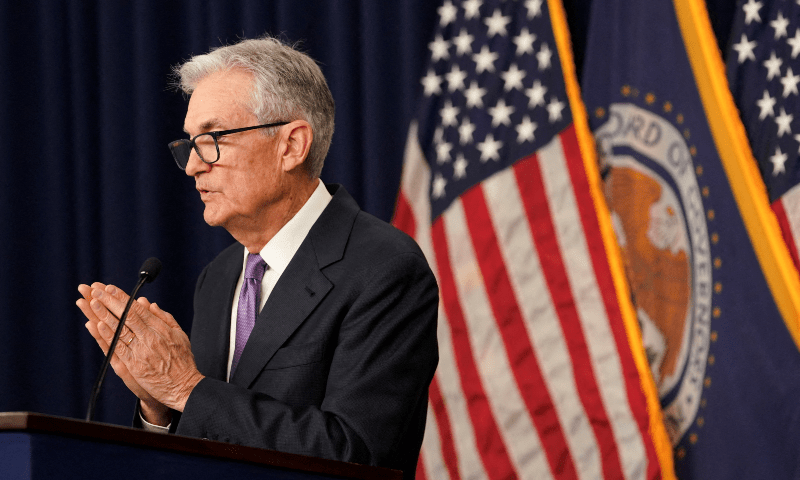Extending the hawkish stance that has dominated global central banking through two years of excessive inflation, the European Central Bank said policy easing was not even brought up in a two-day meeting, the Bank of England said rates would remain high for “an extended period,” and Norway’s central bank even hiked rates.
The hawkish stance came just hours after Fed Chair Jerome Powell said rate hikes were likely over in the US and lower rates were coming into view, with 75 basis points worth of cuts expected by policymakers next year, comments that bolstered rate cut bets on both sides of the Atlantic.
“We’ve seen a rather remarkable divergence in central bank communications,” Matthew Ryan, head of market strategy at financial services firm Ebury, said.
“While the ECB and Bank of England hold the line, and indicate that lower rates remain some way off, the Federal Reserve has actively encouraged markets to pencil in a more aggressive pace of US policy easing.”
ECB President Christine Lagarde batted back any suggestion of an ECB pivot, making the case for a plateau at least until more definitive wage data come into view, probably next spring.
“We did not discuss rate cuts at all,” she said. “No discussion. No debate… Between hike and cut there is a whole plateau,” Lagarde told a news conference.
“We absolutely should not lower our guard,” Lagarde said, noting that some components of inflation were “not budging.” The pushback came even as the bank lowered inflation projections, putting price growth back at its 2 per cent target by late 2025, despite some uptick in prices over the coming months.
At the BoE three policymakers continued to make the case for another rate increase and Norway’s central bank voted for a surprise quarter-point rate hike, given more persistent inflation that could now require steady rates until late 2024.
The Swiss National Bank was the least hawkish, pointing to declining inflation, construed by analysts as a sign of possible rate cuts next year – something its policymakers remained silent on.
Betting on cuts
The concerted pushback did little to temper market expectations.
Investors expected six rate cuts from the ECB next year with almost two moves seen by April. For the BoE, over four quarter-point cuts were priced in for 2024, with the first one seen in May.
“We think the (BoE) is pushing back against the idea of early easing to try to limit the extent to which financial conditions loosen and to send a strong message ahead of the new year pay round,” Oxford Economics said in a note.
“Still, the MPC’s tougher language is not just a tactical ploy. It largely reflects evidence that the UK has higher rates of services inflation and pay growth than the US and eurozone,” it added.
The BoE said its headline inflation was expected to remain around 4.5pc through the end of this year, still well above the 2pc inflation target it shares with the Fed and ECB.
That’s also well above new Fed projections showing core inflation ending 2023 at 3.2pc with strong arguments, given recent behaviour in producer prices and rents, that it will continue falling.
By the end-2024 Fed officials project both core and headline inflation will be 2.4pc, within striking distance of their goal and low enough for Fed officials to anticipate rate reductions.
“We are seeing strong growth that … appears to be moderating. We are seeing a labour market that is coming back into balance … We’re seeing inflation making real progress,” Powell told reporters.







